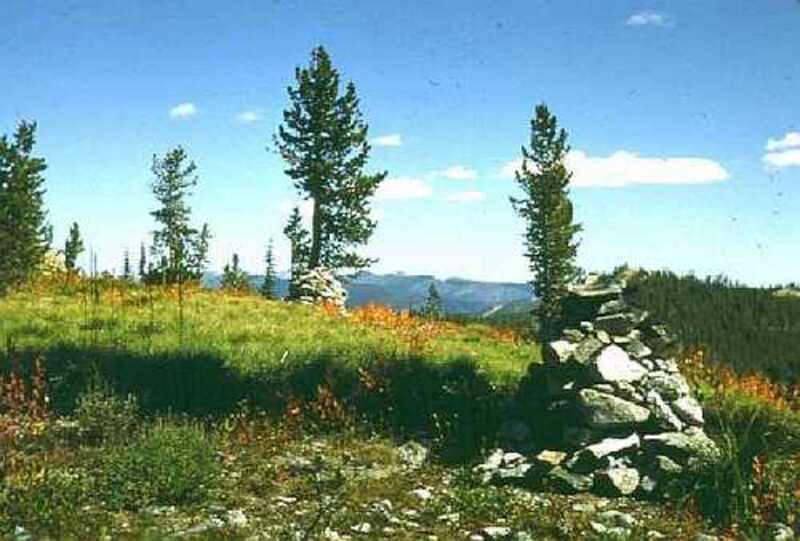“Mail call, mail call.” These words have long caused the heart of many a homesick wayfarer to quicken in anticipation. The conveniences of our modern postal system were unknown to early travelers passing through the rugged Idaho frontier. If old legends are true, ingenious journeyers devised their own system of communication at “Indian Post Office,” located in the northeast extremity of Idaho county on the historic Lolo Trail.
According to one old story, Indians conveyed messages by piling the stones from two rock cairns in various ways. Another legend claims that the high, windswept knob in the Clearwater Mountains was a known landmark where prospectors, warriors, and hunters left messages. Today, in the tradition of the old legends, people leave notes, postcards and business cards in plastic jars tucked inside the rock cairns for others to discover.
Being familiar with the local folklore, the site was aptly named “Indian Post Office” in 1886 by Wellington Bird’s construction crew, while hacking a trail through the dense forest growth and steep terrain of the Clearwater Mountains. Bird had been hired by the US Department of the Interior to construct a road connecting Lewiston, Idaho to Virginia City, Montana so that Lewiston could share in the lucrative business of transporting gold rush supplies to Montana. Bird’s crew found the passage a formidable obstacle, much as did Lewis and Clark when they crossed the Lolo Trail in 1805 and again in 1806.
Traveling conditions were much easier 146 years later when Kyle Laughlin, of Moscow, Idaho set out on a road trip with his son, John, and friend, Oliver Espe, to Jackson Hole, Wyoming by way of Lolo Pass. “With a minimum of planning, the three of us set out at 6:30 A.M. on Tuesday, August 7th.” Kyle, a professional photographer, who was particularly talented at documenting his travels with photos of historic places, spent the first day taking pictures from high mountain vistas along US 95 and the winding mountain road that follows the former Lolo Trail. Laughlin took this photo of “Indian Post Office” on the second morning of their trip after spending the night at Howard’s Camp, named after General Howard who stayed there with his men on August 4, 1877 while pursuing Chief Joseph and his band of Nez Perce across the Lolo Trail into Montana. Laughlin notes in his journal that Howard’s Camp “is a beautiful small green meadow on the north side of a saddle. At the campsite which is about ¼ mile off the road Howard Creek flows in a NW direction. It is a very small creek of clear, cold water. Here two shelter frames had been made by hunters and we used one for our beds.”
Kyle’s widow, Marguerite Laughlin, donated this photo along with approximately 13,000 other negatives and slides, as well as prints, scrapbooks, journals and notes pertaining to Kyle’s lifelong interest in the natural history of the Northwest, his special passion for wildflowers, and a chronicle of the lives of family and friends. This important collection is housed in the Historical Photograph Collection of Special Collections and Archives at the University of Idaho Library where the reading room has been named after Kyle and Marguerite Laughlin.
Photograph selected, and text written, by Karen Hertel, Historical Photographs Curator.
Sources
Written in 1998 for the UI Library’s Digital Memories website.


